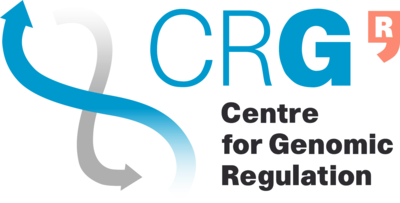Publication:20161121154708
From Bioinformatics Core Wiki
| Publication | |
|---|---|
| URL | http://www.ncbi.nlm.nih.gov/pubmed/22020439 |
| Title | E-box-independent regulation of transcription and differentiation by MYC
|
| Authors | Iris Uribesalgo, Marcus Buschbeck, Arantxa Gutiérrez, Sophia Teichmann, Santiago Demajo, Bernd Kuebler, Josep F. Nomdedéu, Juan Martín-Caballero, Guglielmo Roma, Salvador Aznar Benitah, Luciano Di Croce |
| Date | 2011-10-23
|
| Publisher | Nature Cell Biology |
| DOI | 10.1038/ncb2355 |
| Tag | Basic Helix-Loop-Helix Leucine Zipper Transcription Factors, Cell Differentiation, E-Box Elements, Gene Expression Regulation, Leukemic, HL-60 Cells, Homeostasis, Humans, Leukemia, Promyelocytic, Acute, Proto-Oncogene Mas, Proto-Oncogene Proteins c-myc, Transcription, Genetic, p21-Activated Kinases |
Abstract:
MYC proto-oncogene is a key player in cell homeostasis that is commonly deregulated in human carcinogenesis(1). MYC can either activate or repress target genes by forming a complex with MAX (ref. 2). MYC also exerts MAX-independent functions that are not yet fully characterized(3). Cells possess an intrinsic pathway that can abrogate MYC-MAX dimerization and E-box interaction, by inducing phosphorylation of MYC in a PAK2-dependent manner at three residues located in its helix-loop-helix domain(4). Here we show that these carboxy-terminal phosphorylation events switch MYC from an oncogenic to a tumour-suppressive function. In undifferentiated cells, MYC-MAX is targeted to the promoters of retinoic-acid-responsive genes by its direct interaction with the retinoic acid receptor-α (RARα). MYC-MAX cooperates with RARα to repress genes required for differentiation, in an E-box-independent manner. Conversely, on C-terminal phosphorylation of MYC during differentiation, the complex switches from a repressive to an activating function, by releasing MAX and recruiting transcriptional co-activators. Phospho-MYC synergizes with retinoic acid to eliminate circulating leukaemic cells and to decrease the level of tumour invasion. Our results identify an E-box-independent mechanism for transcriptional regulation by MYC that unveils previously unknown functions for MYC in differentiation. These may be exploited to develop alternative targeted therapies.
MYC proto-oncogene is a key player in cell homeostasis that is commonly deregulated in human carcinogenesis(1). MYC can either activate or repress target genes by forming a complex with MAX (ref. 2). MYC also exerts MAX-independent functions that are not yet fully characterized(3). Cells possess an intrinsic pathway that can abrogate MYC-MAX dimerization and E-box interaction, by inducing phosphorylation of MYC in a PAK2-dependent manner at three residues located in its helix-loop-helix domain(4). Here we show that these carboxy-terminal phosphorylation events switch MYC from an oncogenic to a tumour-suppressive function. In undifferentiated cells, MYC-MAX is targeted to the promoters of retinoic-acid-responsive genes by its direct interaction with the retinoic acid receptor-α (RARα). MYC-MAX cooperates with RARα to repress genes required for differentiation, in an E-box-independent manner. Conversely, on C-terminal phosphorylation of MYC during differentiation, the complex switches from a repressive to an activating function, by releasing MAX and recruiting transcriptional co-activators. Phospho-MYC synergizes with retinoic acid to eliminate circulating leukaemic cells and to decrease the level of tumour invasion. Our results identify an E-box-independent mechanism for transcriptional regulation by MYC that unveils previously unknown functions for MYC in differentiation. These may be exploited to develop alternative targeted therapies.
